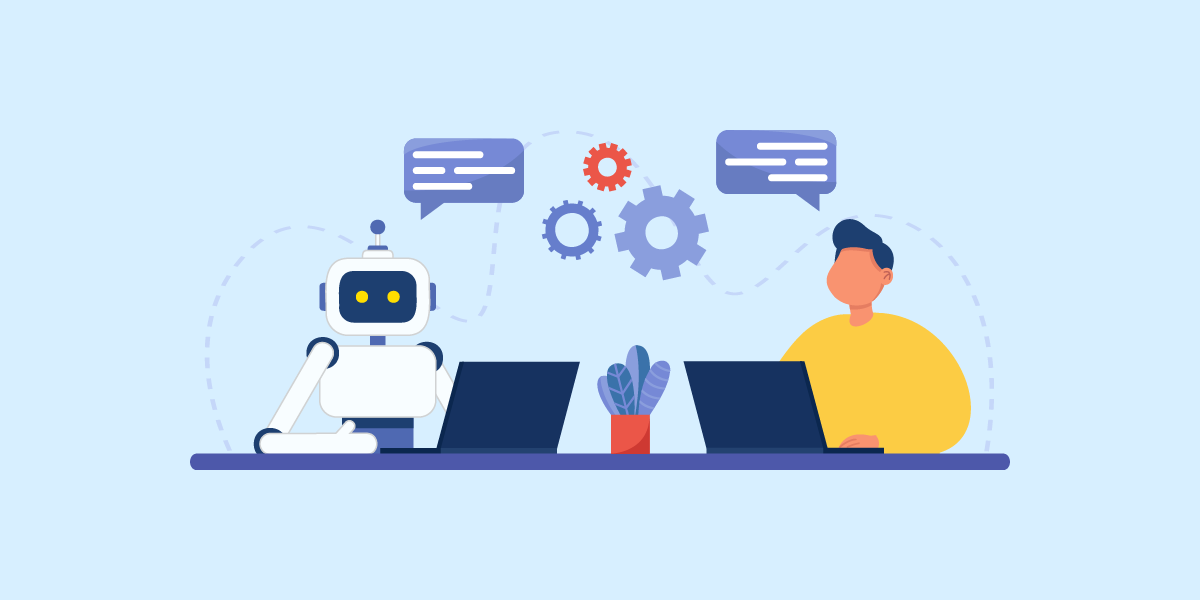
Fraud is a growing concern in our digital age and it threatens both individuals as well as businesses. As the number of online transactions increases, so does fraud. AI Collaborative brings together experts from various fields to create innovative AI-driven solutions for complex challenges. Businesses have turned to a combination of Artificial Intelligence (AI) and human expertise to counter these evolving tactics. Human-AI collaboration is essential in identifying and preventing fraud.
The Evolution of Fraud Detection
Traditionally, fraud detection relied heavily on manual processes and human intuition. Analysts gather data, investigate the trends, and report on strange or suspicious behavior.
However, as fraudsters become smarter and the number of transactions increases, the manual work of analysts becomes harder and harder. The time needed for manual checking also increases.
Here comes Artificial Intelligence. AI created new ways of combating fraud by providing its unique capability of handling large volumes of information in a short time. It can identify unusual patterns in transactions, which may be missed by the human eye. AI can be trained and self-learned to fit business needs.
But, as great as it has shown to be, AI has its flaws or limitations. Fraud detection is not just about patterns; it’s about understanding context, nuances, and intent. This is where the human element remains critical.
The Strengths of AI in Fraud Detection
AI can be excellent in detecting fraud due to its strengths such as:
Real-time Detection
AI systems can continuously monitor transactions in real-time. It detects and stops fraudulent activity before it escalates.
Pattern Recognition/Behavioral Analysis
AI can identify suspicious or unusual patterns in data. For example, if a customer suddenly makes large purchases outside his usual spending habits, AI can flag these transactions as suspicious. Machine learning algorithms help AI systems to keep evolving and adapting to new fraud strategies.
Scalability
AI can process millions of transactions simultaneously on a global platform. This makes it highly scalable for large organizations. These capabilities make AI an essential tool in detecting fraud. This is especially useful for businesses that handle high volumes of transactions.
The Role of Humans in Fraud Detection
Although AI scales well in information processing, human knowledge is crucial for analyzing the background and details of fraud schemes. The role of human analysts is to not only work with data but to bring their experience and judgment to a case.
Contextual Understanding
Humans can interpret ambiguous scenarios better than AI. Humans can distinguish between unusual but legitimate behavior and actual fraudulent activity, thus having fewer cases of false negatives.
Investigating Complex Fraud
Fraud can also be quite elaborate, involving several phases of the scam. AI can notify users of odd patterns; however, such cases require deeper examination by people to understand the various schemes involved.
Continuous Oversight
Fraudsters always come up with new strategies to overcome the AI models. Humans can monitor the output and refine algorithms as fraud schemes continue to change.
Ethical Judgment
Humans can incorporate ethical considerations, especially when fraud detection may affect the customers or where the heavy reliance on AI could harm legitimate users.
The Perfect Blend: Human-AI Collaboration
The most effective fraud detection strategies today involve a collaborative approach, where AI and humans collaborate.
AI for Speed, Humans for Better Accuracy
For the first level of fraud checking, AI is used. AI can handle numerous transactions instantly and then flag suspicious transactions for manual review. Then, humans will check and analyze these transactions, ensuring that legitimate users aren’t penalized and that fraudsters are accurately identified.
AI as a Tool for Fraud Analysts
AI helps fraud analysts by providing valuable insights and data. Fraud analysts can use AI tools to prioritize cases, streamline investigations, and gain an overview of fraud trends.
Continuous Learning
Humans review AI decisions and adjust the models based on their business insights. Then, AI will learn and evolve to detect fraud better in the future.
Looking Ahead: The Future of Fraud Detection
With fraud becoming more sophisticated over the years, the collaboration between humans and AI will be even more crucial. AI will grow to be more complex and will embrace other technologies such as deep learning and behavioral analysis.
However, the fraudsters will also keep changing their fraud techniques and look for other areas that they can exploit in the digital systems. In the future, more integration is likely to happen between AI and humans.
AI will handle the bulk of transactional data analysis, while humans will focus on more strategic roles, such as investigating large-scale fraud operations, improving AI algorithms, and ensuring ethical compliance. By using both AI and humans, customers and businesses can be better protected.
Conclusion
The combination of AI data processing and human knowledge is a powerful weapon in current fraud detection systems. It can analyze large volumes of data in real-time, identify different patterns, and learn new strategies.
Meanwhile, humans bring judgment, context, and ethical understanding. This collaborative effort creates a robust defense against fraud, blending speed, precision, and insight to stay one step ahead of cybercriminals.
Free Fraud Protection Today!
Start safeguarding your business with FraudLabs Pro Fraud Prevention at Zero Cost!